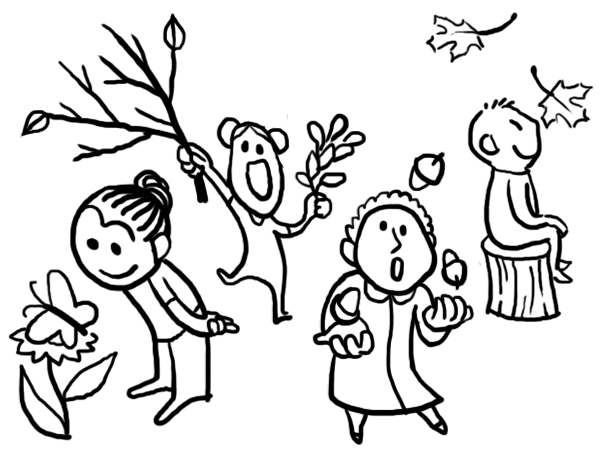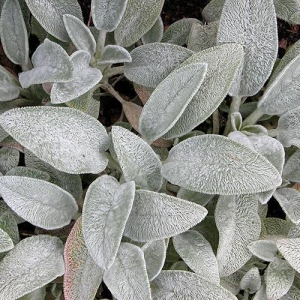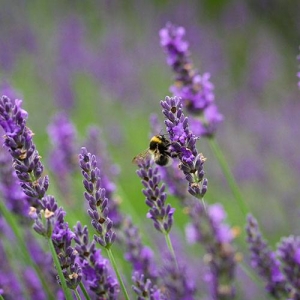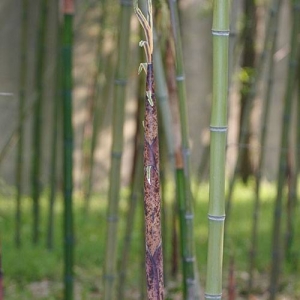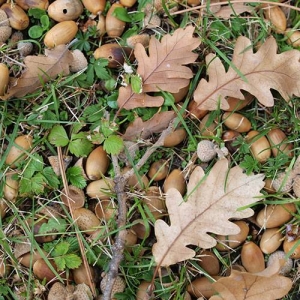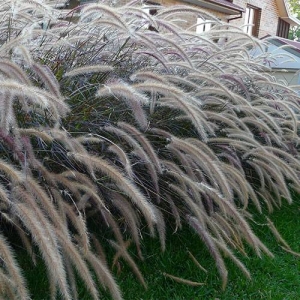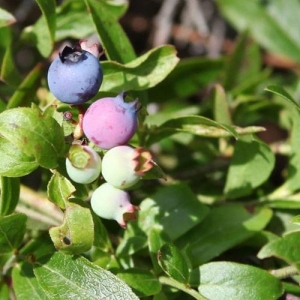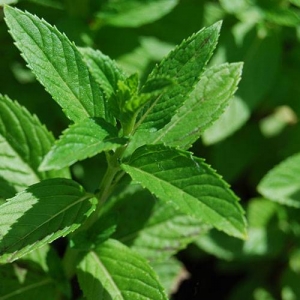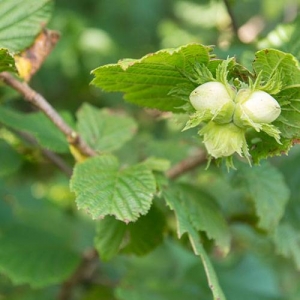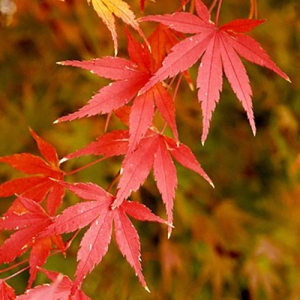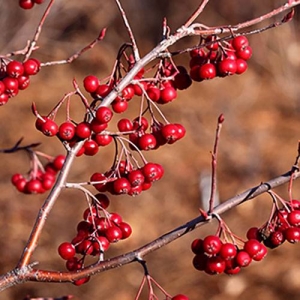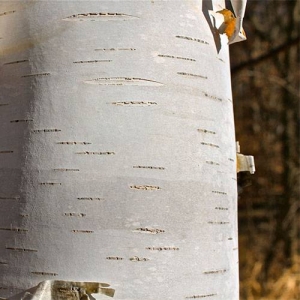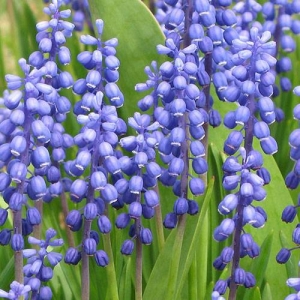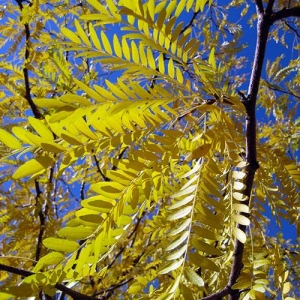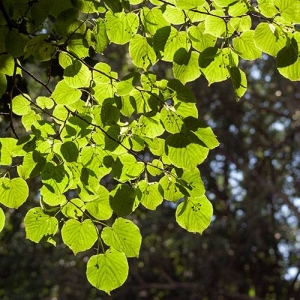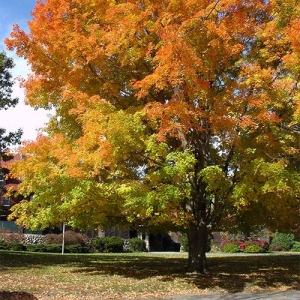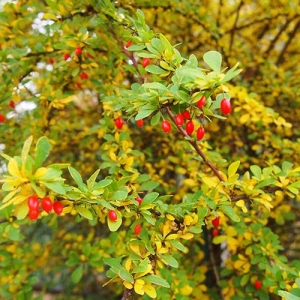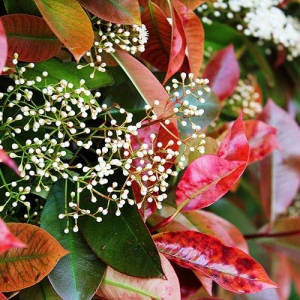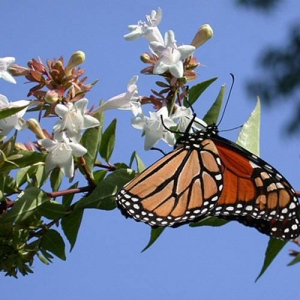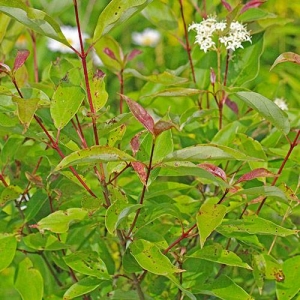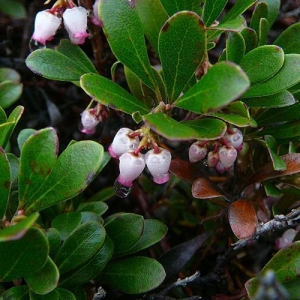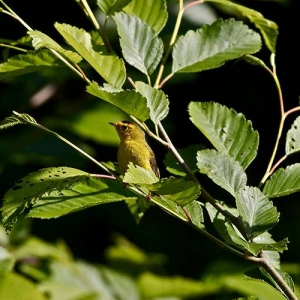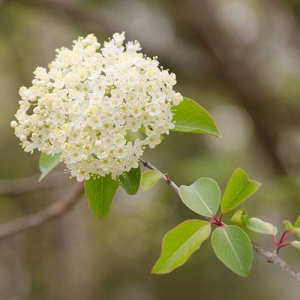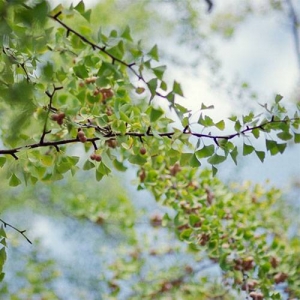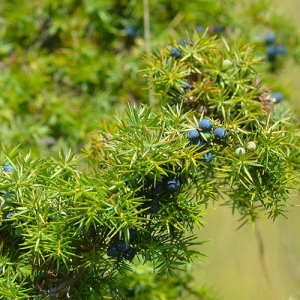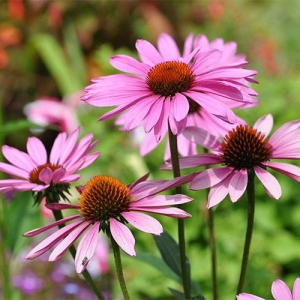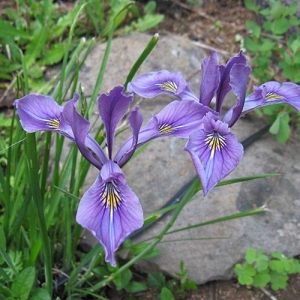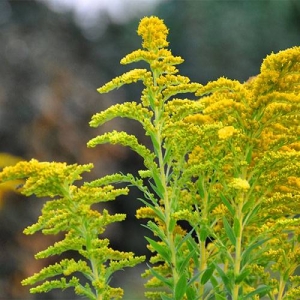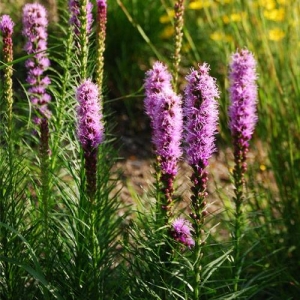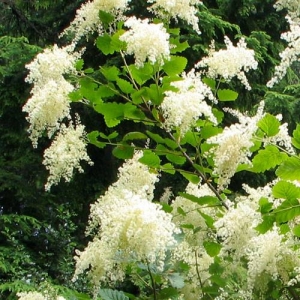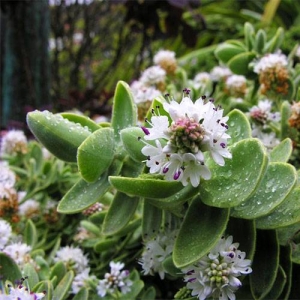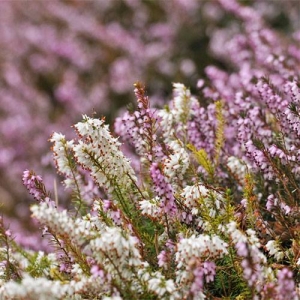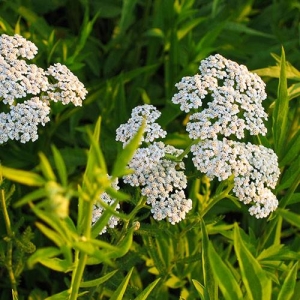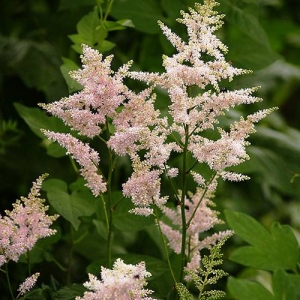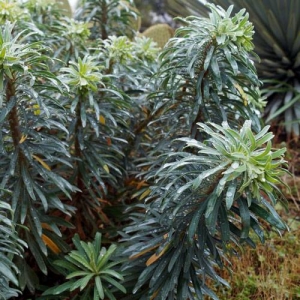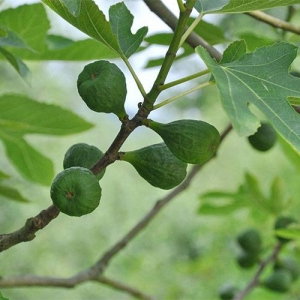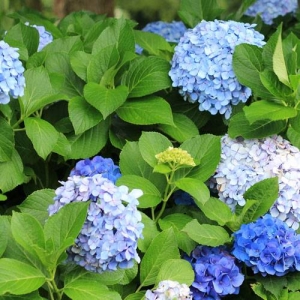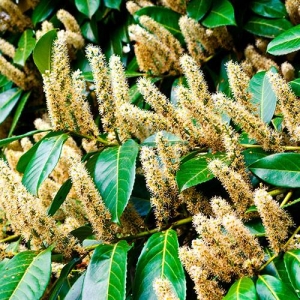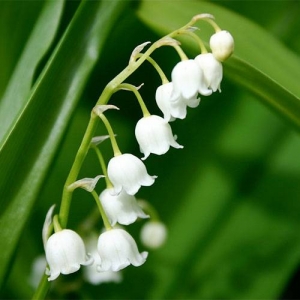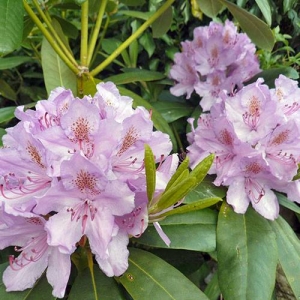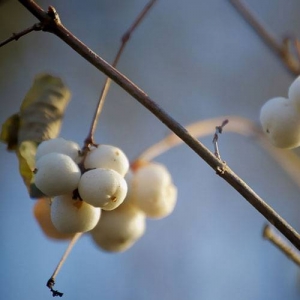Sensory Variety
The wide range of sounds, textures, colours, and smells can delight children. Herbs and fruit-bearing plants in particular can stimulate their sense of taste. When many sense-stimulating plants are put together in a garden, they can create a “sensory garden” where children can experience all the different sensations that nature has to offer.
Sensory plants:
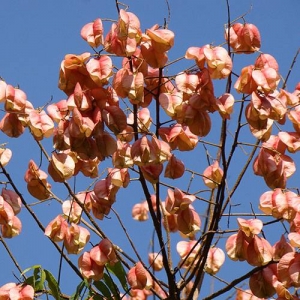 Golden-rain Tree: Fruit capsules clatter in the wind and are fun to play with.
(Image: mauroguanandi)
Golden-rain Tree: Fruit capsules clatter in the wind and are fun to play with.
(Image: mauroguanandi)
Play Value
We all remember climbing trees as children (and maybe still as adults!). Some shrubs can also create quiet areas for children who seek some alone time, or “rooms” that can support a narrative in imaginative play. Parts of plants can also serve as props. Kids can find many uses for cones, seeds, pods, leaves, and flowers, and this is further enhanced when elements such as rocks, logs, and tables are provided for a more dynamic and interactive play environment.
Please note: There is of course a risk of falling associated with tree-climbing, and care must be taken to minimize this risk. Designers should check local by-laws that address trees in public and playground settings, and install shock-absorbing surfacing below any tree intended for climbing.
Plants for play:
Nature’s Bounty
Plants that produce showy flowers or edible fruits, nuts, and seeds, are valuable in any setting, and play areas are no exception. Children love collecting berries and other colourful or edible plant parts. These plants can also provide educational opportunities to teach kids about food production, and about which plants are edible and which are harmful. Care should also be taken to avoid placing harmful plants close to areas where kids can access them.
Edible and fruit-bearing plants:
Seasonal Interest
The bright colours of autumn are a wonderful sight for children, and are a visual sign of the changing seasons. Winter has its own visual interest, with some trees and shrubs showing off beautiful bark and stems, and some with bright fruit that stays all winter, offering colour and inviting birds to visit. The first leaves and blooms of spring hint at the warmer days soon to come.
Showy seasonal plants:
Shade Quality
It is important to provide shelter from scorching heat in warmer seasons, and large trees can provide shade, as well as a ceiling that creates a sense of protection and enclosure. This is especially important for children with particular types of disabilities. Playgrounds should include areas with varying levels of shade to keep everyone comfortable and safe. A thick layer of mulch can protect tree roots from too much play, and also provide a nice cushioned surface.
Shade trees:
Screens
Trees and shrubs, especially evergreens that retain their leaves throughout the winter, are excellent tools for creating visual screens and blocking strong winds. You can also use vines to cover a fence, increasing privacy while also creating a more natural, garden-like environment.
The best way to create a wind barrier is to plant several rows: a low shrub row, then taller shrubs, and a final row of trees. This softens the wind, and can provide protection for a distance of about twice the height of the barrier (e.g., a barrier that’s 10 feet tall can protect an area up to 20 feet downwind). These screens can be fairly low-maintenance if you choose plants that are suitable for their local environment and conditions. Thorny plants can make effective physical barriers to make a play area more safe without sacrificing aesthetics, and can be just as effective as a fence in keeping children away from hazardous areas.
Plants for screening:
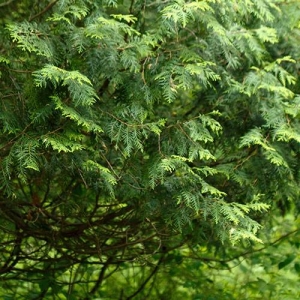 White Cedar: thick evergreen foliage creates a visual barrier and wind protection
(Image: Tom Potterfield)
White Cedar: thick evergreen foliage creates a visual barrier and wind protection
(Image: Tom Potterfield)
Wildlife Enhancement
Some plants have very high habitat value, and seeing how plants support local wildlife can be an enriching and educational experience. Watching a squirrel gather acorns, a butterfly flutter from flower to flower, or a bird fly to find berries and seeds, can help kids to become environmentally aware. Dedicating a small part of a play area to habitat can create hours of fascination throughout the year.
Plants with high habitat value:
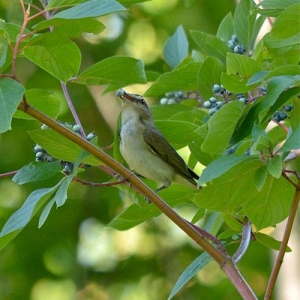 Dogwood: attracts song and upland groundbirds, small mammals, hoofed browsers, and waterbirds
(Image: eugene beckes)
Dogwood: attracts song and upland groundbirds, small mammals, hoofed browsers, and waterbirds
(Image: eugene beckes)
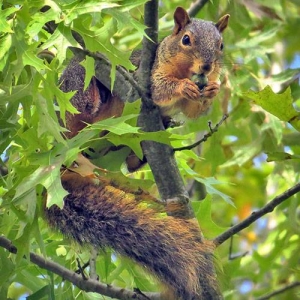 Oak: attracts squirrels, as well as other small mammals, birds, and hoofed browsers
(Image: Richard Griffin)
Oak: attracts squirrels, as well as other small mammals, birds, and hoofed browsers
(Image: Richard Griffin)
Erosion Control
Wind, rain, and even the many footsteps of children at play, can cause significant erosion on playgrounds. Selecting the right plants can make a huge difference. Low groundcovers can protect the soil from wind, water, and trampling. Trees with large leaves can reduce the impact of heavy rain, and their big roots can hold soil in place, especially on hills. When used as windbreaks, trees and shrubs can also reduce erosion caused by strong winds.
Plants for erosion control:
Drought Tolerance
Think plants are too high-maintenance? Try xeriscaping! Choosing tough, drought-tolerant plants can reduce oreliminate the need for watering. Some plants have deep root systems and thick, waxy, or fuzzy leaves that help them retain water and survive in harsh conditions. Kids can also learn about how native species adapt to local conditions, and about water conservation. No matter what the conditions, it’s absolutely essential to choose the right plant for the right place if you want it to grow!
Drought-tolerant plants:
Right Plant, Right Place
No matter what the conditions, it’s absolutely essential to choose the right plant for the right place if you want it to grow! Choose plants that are appropriate for your region and hardiness zone so they can survive the local conditions year-round. Plants also have preferences for how much sun or shade they can tolerate, how much wind, how much trampling, the pH of the soil, and more. Plants that are indigenous to your region are often a safe bet, but there are many non-native plants that will do just as well when put in the right place. A landscape architect can help you choose plants that will thrive where you put it. The better a plant is suited for where it’s planted, the less maintenance it will require. This can lead to big savings in both time and money.
Plants for certain conditions:
Safety First
Most people know to avoid plants like poison ivy, poison oak, and stinging nettle, but there are many more toxic plants that are commonly found in gardens. They can cause anything from mild skin irritation to blisters, and if ingested, they can cause a myriad of symptoms including mild indigestion, dizziness, heart palpitations, difficulty breathing, and worse. The most toxic plants are best avoided in environments for children or pets. Consult a landscape architect or other expert to make sure you’re choosing safe plants. Keep in mind, however, that some of the most common plants found in people’s gardens can be irritating or poisonous if ingested, so it’s a good idea to teach kids from a very young age to not put plants in their mouths, including delicious-looking berries, unless they know for sure that they’re food.
Common toxic plants, ranging from mildly irritating to dangerous:
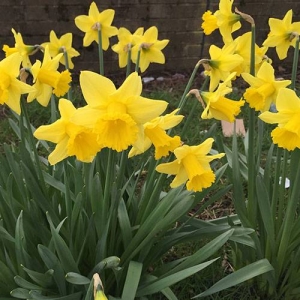 Daffodils: Don't worry, these are just an example of the many common plants that are mildly irritating to skin and eyes
(Image: quimby)
Daffodils: Don't worry, these are just an example of the many common plants that are mildly irritating to skin and eyes
(Image: quimby)
